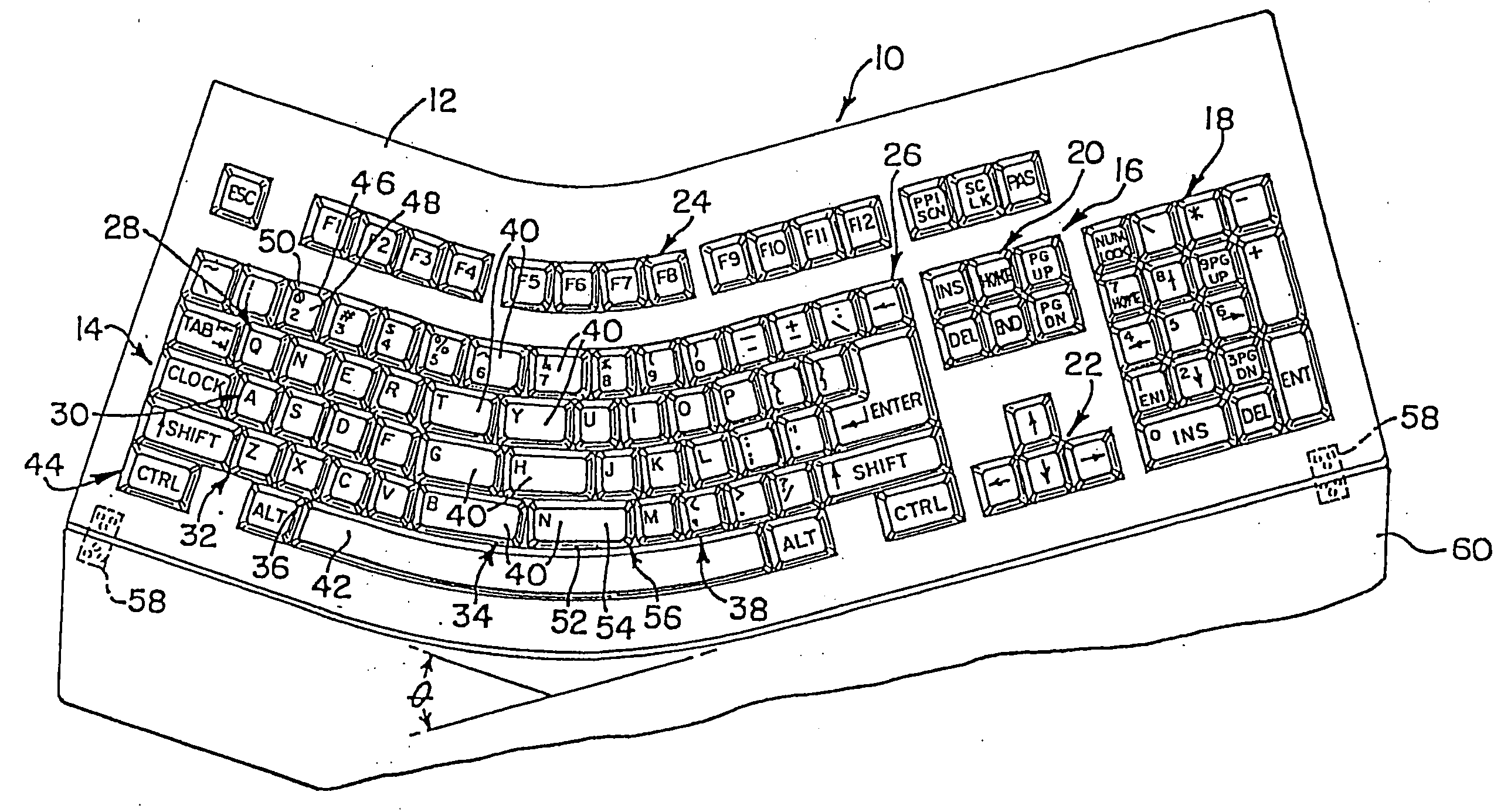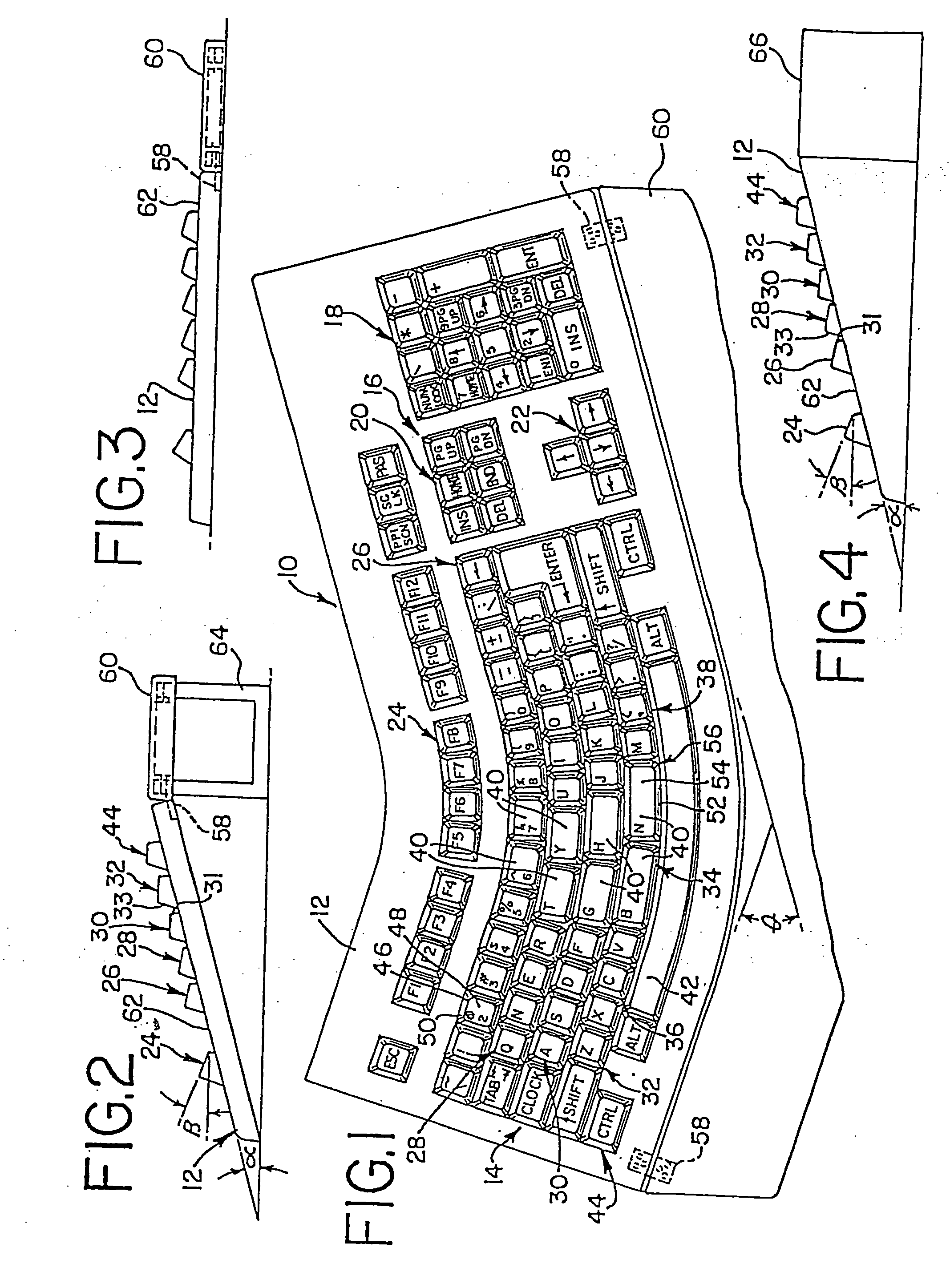Ergonomic keyboard
a keyboard and ergonomic technology, applied in the field of ergonomic keyboards, can solve the problems of fatigue and strain, frequent users of standard keyboards are often afflicted with a serious repetitive stress injury (rsi), and longer strokes increase muscle strain and fatigu
- Summary
- Abstract
- Description
- Claims
- Application Information
AI Technical Summary
Benefits of technology
Problems solved by technology
Method used
Image
Examples
Embodiment Construction
. PREFERRED EMBODIMENTS
[0026] Keyboard arrangements of the present invention are adapted to be used at normal typing stations of suitable height without special recesses. Furthermore, the arrangement of keys of the present invention permits the hands, wrists, elbows and shoulders to be maintained in ergonomically advantageous orientations.
[0027]FIG. 1 shows the preferred proportions and relative sizes of the advantageous keyboard arrangement according to the present embodiment. Referring to FIG. 1, Keyboard 10 comprises several distinct groups of keys. Each group of keys is supported on the keyboard mount 12. Mount 12 may be made from metal or plastic. Plastic, however, is the preferred construction material because it is less expensive and easy to mold.
[0028] The alphanumeric key group 14 is located to the left side of keyboard 10. On the right side of keyboard 10 is located a main cursor group 16 and a numeric / cursor keypad group 18. The numeric / cursor keypad group 18 is located...
PUM
 Login to View More
Login to View More Abstract
Description
Claims
Application Information
 Login to View More
Login to View More - R&D
- Intellectual Property
- Life Sciences
- Materials
- Tech Scout
- Unparalleled Data Quality
- Higher Quality Content
- 60% Fewer Hallucinations
Browse by: Latest US Patents, China's latest patents, Technical Efficacy Thesaurus, Application Domain, Technology Topic, Popular Technical Reports.
© 2025 PatSnap. All rights reserved.Legal|Privacy policy|Modern Slavery Act Transparency Statement|Sitemap|About US| Contact US: help@patsnap.com


